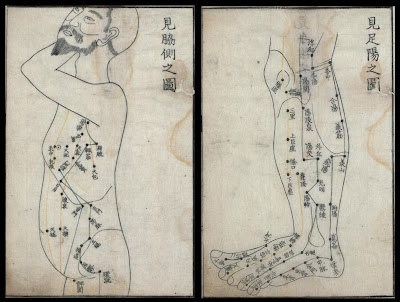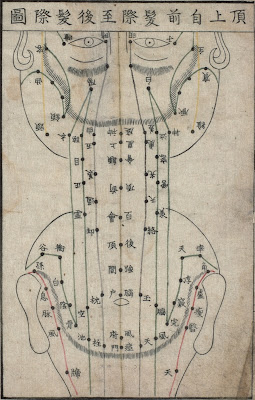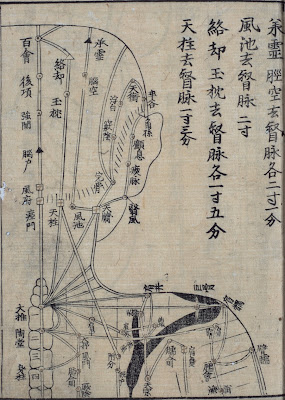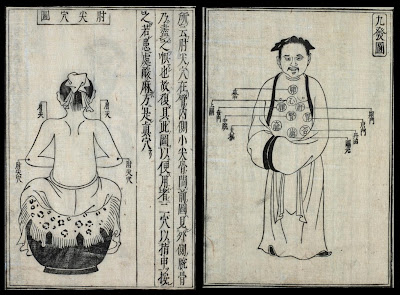




yuketsuzukan - undated [book 60]


yuketsubenkai - 1758 [book 58]


shinkyujushikyokot - 1752 [book 108]



yososhinpikyukei - undated [book 62]


geryokeikengata - undated [book 105]

naishodohanzu - 1808 [book 71]

shigoroku - undated [book 91]




fueishinsetsu - 1858 [book 88]
Mention is made of Benjamin Hobson, a British medical missionary, who went to Hong Kong and China for twenty years in the mid-1800s. He is credited with introducing western medicine and aspects of western science to China. I presume this book is known as Fuying xinshuo ('A New Treatise on Women’s and Children’s Diseases') and was in fact written by Hobson. [more depth: 'Missionary Science as Natural Theology in China and Japan' by Ryan Dunch]


rikushisomokusozuk - undated [book 111]
I thought at first this book was a herbal/pharmacopeia. Then animals, such as the more stylised examples above, started appearing; so I figured it was more a book on natural history. But there are also quite a few illustrations of horse carriages and items used by people towards the end so I really have no clue now as to its overall subject.- These illustrations were selected from the second half of the 'Eastern Books and Manuscripts' from the Image Collection of Old Medical Books at Kyushu University Medical Library (click on 'list of titles'). The titles above are taken from the web URLs.
- Previously: Part One; medicine.
- See also: Japanese Art on the Subject of Medicine at the Digital Clendening (Kansas University Medical Center)


No comments:
Post a Comment